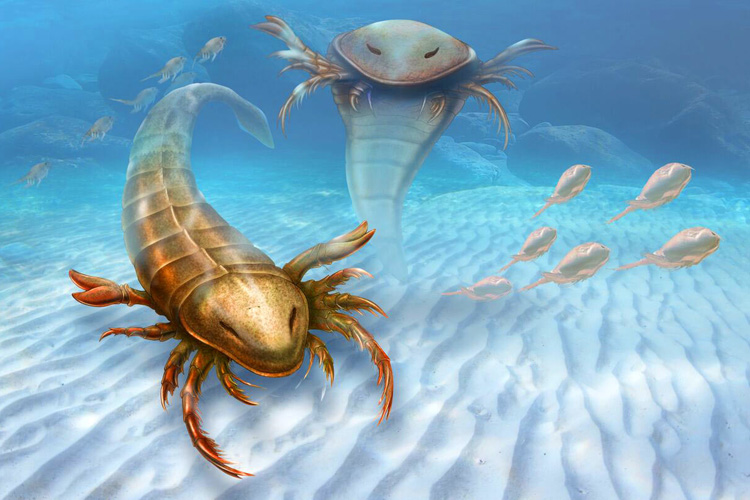A group of scientist from the Yale University has discovered the oldest known species of a sea scorpion, in a meteorite crater located in the Iowa River, in Winneshiek.
The "Pentecopterus decorahensis", named after an ancient Greek warship, lived 467 million years ago and grew to nearly six feet (1.5 meters) in length.
The animal belongs to the family of eurypterid, a group of aquatic arthropods that are ancestors of modern ticks, lobsters and spiders.
"Pentecopterus is large and predatory, and eurypterids must have been important predators in these early Palaeozoic ecosystems," explains James Lamsdel, author of the study published in the BMC Evolutionary Biology journal.
"This is the first real big predator. I wouldn't have wanted to be swimming with it. There's something about bugs. When they're a certain size, they shouldn't be allowed to get bigger. It is incredibly bizarre. The shape of the paddle - the leg which it would use to swim - is unique, as is the shape of the head."
The huge sea scorpion didn't sting, but it was a very aggressive predator. The "Pentecopterus decorahensis" was older than the dinosaurs, and it is also ten million years older than any other eurypterid.
